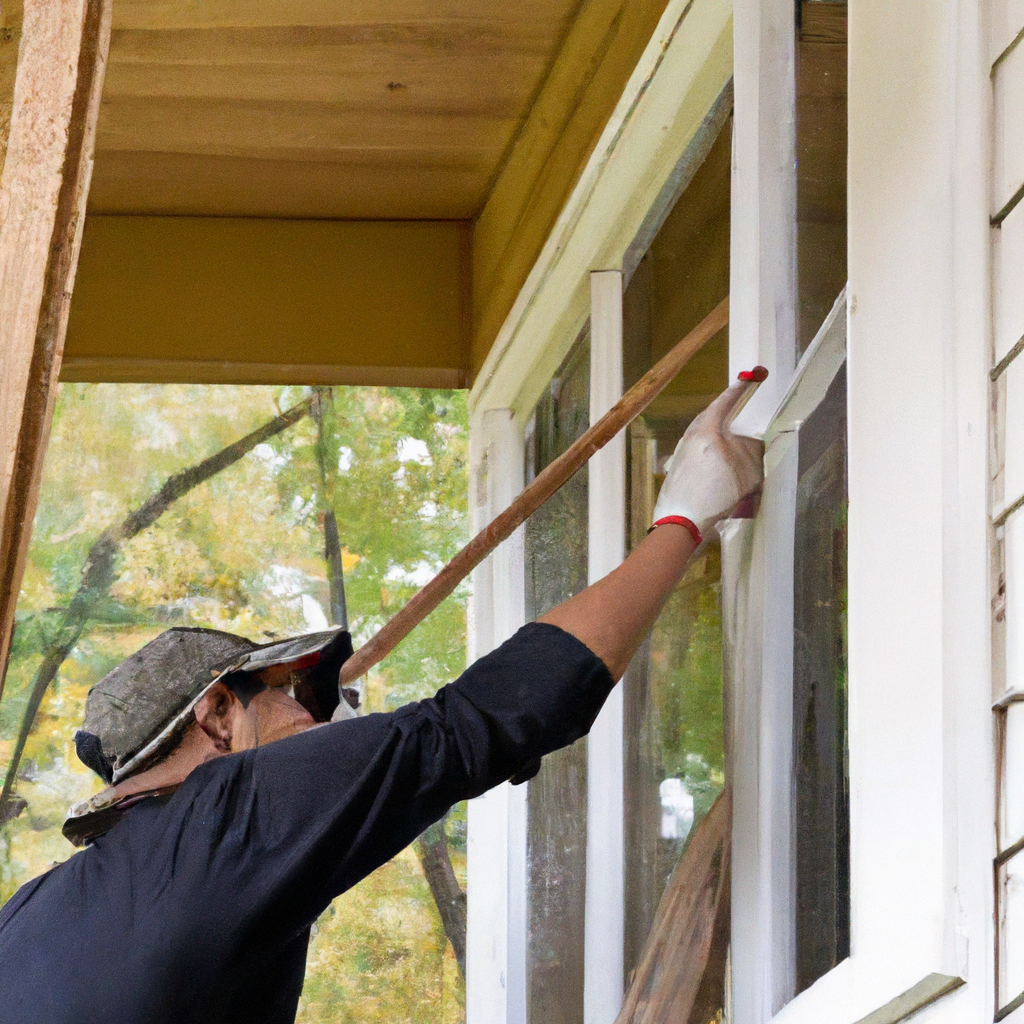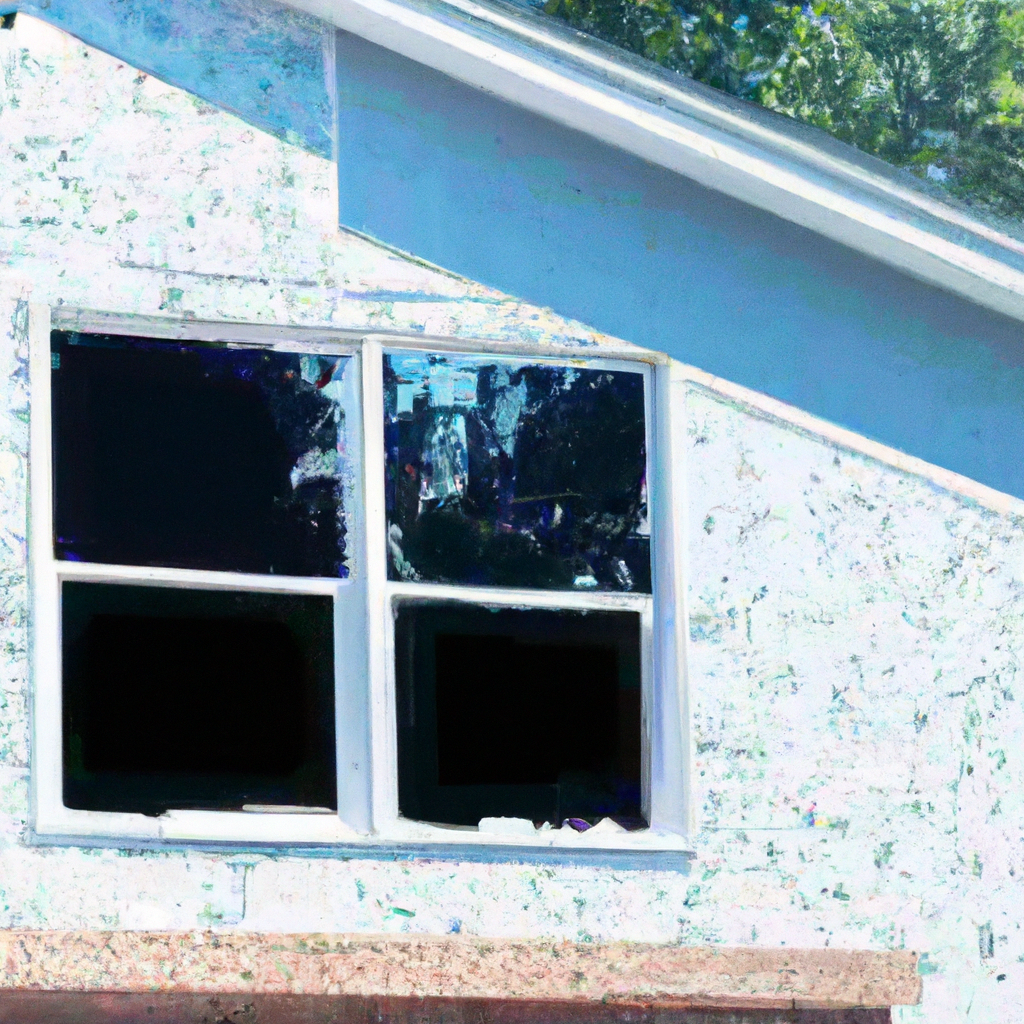So, you’ve decided to upgrade your home with impact windows for added protection and peace of mind – good choice! Now comes the next step: preparing your home for the installation process. Before the professionals arrive to install these sturdy windows, there are a few things you can do to ensure a smooth and efficient process. From clearing the area around the windows to securing valuable items, this article will guide you through the necessary steps in preparing your home for an impact window installation. Let’s get started!
Preparation before the Installation
Before you dive into the process of installing impact windows in your home, there are a few important steps you need to take to ensure a smooth and successful installation. By properly preparing your home, you can minimize any potential disruptions and ensure the safety of your belongings. Let’s walk through each step together.
Clear the Work Area
First things first, clear the work area. Remove any furniture, rugs, or other items that may obstruct the installation process. This will provide the installers with ample space to work efficiently and safely. Remember, the more clutter-free the area is, the smoother the installation will be.
Remove Curtains and Blinds
To prevent any damage to your curtains and blinds, it’s best to remove them prior to the installation. Take them down and store them safely away from the work area. This will not only protect them from accidental damage but also give the installers easy access to the windows without any obstructions.
Protect Valuable Items
Next, take proactive measures to protect your valuable items. Remove any fragile or valuable items from the vicinity of the installation. This includes artwork, antiques, or any other items that may be susceptible to potential damage during the installation process. Storing them safely away will ensure their protection.
Remove Obstacles
To ensure a smooth installation process, it’s crucial to remove any obstacles that may hinder access to the windows. This includes furniture, plants, or any other items that may obstruct the installers’ path. By removing these obstacles in advance, you’ll save time and make the installation process more efficient.
Secure Fragile Items
In addition to removing obstacles, it’s equally important to secure fragile items that cannot be moved. This includes items like delicate glassware, ceramics, or other breakable objects. Cover these items with protective materials such as bubble wrap or blankets to ensure they don’t get damaged during the installation.
Make Accommodations for Noise and Dust
Impact window installations can often be noisy and produce dust. To minimize any inconvenience, it’s a good idea to make accommodations for noise and dust during the installation. If possible, plan to schedule the installation during a time when you can be away from home or make arrangements to spend time in a quieter part of your home.
Inform Neighbors
It’s always courteous to inform your neighbors about the impact window installation. Let them know the approximate duration of the installation and apologize in advance for any inconvenience caused by noise or potential disruption to parking spaces. This simple gesture will help maintain good relations with your neighbors during the process.
Prepare for Potential Power Outages
Due to the nature of the installation process, there is a possibility of temporary power outages. It’s best to be prepared for such situations by having flashlights and candles readily available. Additionally, consider unplugging any sensitive electronics or appliances to protect them from potential power surges when the power is restored.
Arrange for Temporary Relocation if Necessary
In some cases, impact window installations may require you to temporarily relocate from your home. This could be due to safety concerns or the need for ample space for the installation team. If your contractor advises temporary relocation, make the necessary arrangements in advance to ensure a seamless transition.
Secure Permits and Insurance
Before the installation day, it’s crucial to secure any necessary permits and insurance. Check with your local authorities to determine if a permit is required for impact window installations. Additionally, review your homeowner’s insurance policy to ensure that you are adequately covered for any potential damages that may occur during the installation process.
Preparing the Windows and Doors
With the initial preparations complete, it’s time to focus on preparing the actual windows and doors for installation. This involves careful measurement, inspection, and ensuring the proper fit of the impact windows. Let’s delve into the necessary steps.
Measure Sizes and Dimensions
Accurate measurements are crucial when it comes to installing impact windows. Take precise measurements of each window and door opening to ensure the proper fit. Be meticulous in measuring both the height and width, as even a slight discrepancy can affect the installation process. If you’re unsure about taking accurate measurements, consider consulting a professional.
Remove Existing Windows and Doors
Before installing impact windows, it’s necessary to remove the existing windows and doors. This typically involves carefully unscrewing any fasteners or hinges and taking out the old windows or doors. Take your time during this process to minimize any potential damage to the surrounding areas or the existing windows themselves.
Inspect and Repair Surrounding Areas
Once the existing windows and doors have been removed, take the opportunity to inspect the surrounding areas. Look for any signs of damage, rot, or decay that may require repair before the installation. Addressing these issues beforehand will ensure a sturdy and secure installation of the impact windows.
Clean and Prep the Window Openings
After inspecting the surrounding areas, thoroughly clean the window openings. Remove any debris, dust, or dirt that may have accumulated over time. A clean surface will ensure better adhesion and sealing of the impact windows. Additionally, clear the sills and tracks to ensure smooth operation once the windows are installed.
Check for Proper Insulation
Insulation is essential to ensure the energy efficiency of your impact windows. Check the existing insulation around the window openings and make any necessary repairs or additions. Proper insulation will help create a tight seal, preventing drafts and reducing energy loss.
Secure Potential Entry Points
One of the key benefits of impact windows is their enhanced security. However, it’s important to ensure that potential entry points are properly secured before installation. Check that all locks, latches, and security mechanisms are in good working order. This will help maximize the security features of your impact windows.
Seal Cracks and Gaps
To ensure optimal performance and energy efficiency, it’s important to seal any cracks or gaps around the window openings. Use an appropriate sealant to fill in any gaps that may allow air or moisture to enter. This will help maintain a comfortable indoor environment and protect your home from potential water damage.
Apply Protective Film or Plywood Coverings
During the installation process, it’s wise to protect your home from any accidental damage or debris. Apply a protective film or use plywood coverings on adjacent walls, floors, and surfaces. This will provide an added layer of protection and give you peace of mind during the installation.
Install Reinforcement if Required
Depending on the existing structural integrity of your home, it may be necessary to install additional reinforcement for the impact windows. Consult with your contractor to determine if any reinforcement measures are required. This could involve installing additional supports, such as angle irons or header bars, to ensure the windows are securely in place.
Prep the Doors for Installations
If you are also installing impact doors, make sure to prep them before the installation. This involves removing the existing doors, inspecting the surrounding areas, and ensuring proper measurements. Follow the same steps as you did for the windows, including cleaning, sealing, and reinforcing if necessary.

Preparing the Interior
With the windows and doors ready for installation, it’s time to focus on preparing the interior of your home. This involves protecting your belongings, ensuring proper ventilation, and having safety measures in place. Let’s explore these steps in more detail.
Cover Furniture and Flooring
To prevent any potential damage during the installation, cover your furniture and flooring. Use protective covers, blankets, or plastic sheets to shield your belongings from dust, debris, and accidental scratches. This will save you from the hassle of cleaning up afterward and keep your home looking its best throughout the process.
Protect Electronics and Appliances
Just like your furniture, electronics and appliances need protection during the impact window installation. Cover them with plastic sheets or move them to another room to shield them from dust and potential damage. Unplug any sensitive electronics to avoid power surges during the installation.
Remove Wall Decorations
Take down any wall decorations, such as mirrors, paintings, or picture frames, in the installation area. This will prevent them from falling or getting damaged during the installation process. Store them safely away from the work area until the installation is complete.
Secure Fragile Items
In addition to wall decorations, secure any fragile items that cannot be removed from the installation area. This includes delicate items like vases, figurines, or collectibles. Use bubble wrap or other protective materials to ensure they remain safe throughout the installation process.
Create a Barrier or Temporary Wall Partition
To contain the dust and debris generated during the installation, consider creating a barrier or temporary wall partition. This can be done using plastic sheets, a zipper wall, or any other suitable materials. By creating a physical barrier, you can separate the work area from the rest of your home, minimizing any potential mess and disruption.
Seal Off the Work Area
In addition to creating a barrier, seal off the work area by covering any vents or openings that may allow dust or debris to enter other parts of your home. Use plastic sheets or tape to seal off vents, air ducts, or any other openings that may connect to the installation area.
Ensure Proper Ventilation
While sealing off the work area is important, it’s equally crucial to ensure proper ventilation during the installation. Open windows in other parts of your home to allow fresh air to circulate and prevent a buildup of dust or fumes. Good ventilation will make the installation process more comfortable and prevent any unpleasant odors from lingering.
Have Fire Safety Measures in Place
Any construction work can increase the risk of fire hazards. Ensure that you have fire safety measures in place before the installation begins. Check that smoke detectors and fire extinguishers are functional and easily accessible. It’s better to be prepared and have peace of mind during the installation process.
Prepare Emergency Exit Plan
In case of any unforeseen emergencies, it’s crucial to have an emergency exit plan. Establish clear paths to exits, especially if the installation area is located on upper floors. Discuss the plan with your family members or household members to ensure everyone knows what to do in case of an emergency.
Label Breakers and Shut Off Power
To further ensure safety during the installation process, label the breakers that control the power supply to the installation area. This will allow you to easily shut off the power in case it becomes necessary. Communicate this information to the installation team as well, so they are aware of the location of the breaker box.
Preparing the Exterior
As the installation day approaches, it’s important to prepare the exterior of your home. By taking necessary steps to protect your landscape, furniture, and other outdoor elements, you can ensure a smooth and hassle-free installation process. Let’s go through the essential tasks.
Clear Construction Area
Clear the construction area by removing any obstacles that may hinder the installation process. This includes patio furniture, outdoor toys, or debris that may obstruct access to the windows and doors being replaced. Clearing the area will allow the installers to work efficiently and complete the job in a timely manner.
Trim Trees and Overhanging Branches
Inspect your trees and trim any branches that may be hanging above or near the windows and doors being replaced. This will prevent any potential damage to both the impact windows and the trees themselves during the installation process. Trimming the branches in advance will ensure a safer and smoother installation.
Protect Landscape and Garden
Take steps to protect your landscape and garden from any potential damage during the impact window installation. Cover plants, delicate flowers, or other susceptible elements with protective sheets or move them to a safer location. This will prevent any accidental damage caused by falling debris or tools.
Move Outdoor Furniture and Decorations
Just like the interior, it’s important to move any outdoor furniture or decorations away from the construction area. Store them in a safe and secure spot to protect them from potential damage during the installation process. This will also give the installers more space to work efficiently.
Cover Plants and Shrubs
In addition to moving outdoor furniture, cover any plants or shrubs that cannot be relocated. Use sheets or tarps to protect them from falling debris or accidental damage. This will help safeguard your precious plants while the impact windows are being installed.
Protect Pool and Outdoor Equipment
If you have a pool or other outdoor equipment in close proximity to the installation area, take the necessary measures to protect them. Cover the pool with a pool cover or tarp to prevent any debris from falling into the water. Similarly, cover any outdoor equipment to shield them from dust, debris, or accidental damage.
Create a Temporary Storage Area
Before the installation, create a temporary storage area in your yard to store any items that need to be moved temporarily. This can be a designated spot where you can safely place furniture, decorations, or other belongings while the installation takes place. Organize the storage area to make retrieval easier once the installation is complete.
Ensure Sufficient Lighting
Since the installation may take place both inside and outside your home, it’s important to ensure sufficient lighting. Make sure there is ample illumination in the work area so that the installers can work safely and effectively. This will also provide better visibility during the installation process.
Secure Construction Perimeter
To maintain a safe and secure work environment, secure the construction perimeter. Use caution tape or signs to clearly mark off the installation area and deter unauthorized access. This will help protect both the installation team and your home during the process.
Install Temporary Fencing if Necessary
Depending on the size of your property and the complexity of the installation, installing temporary fencing may be necessary. This is particularly important if you have pets or children who might be tempted to explore the construction area. Temporary fencing will help create a physical barrier and provide an added layer of safety.

Preparing for the Installation Day
As the installation day approaches, it’s essential to make final preparations to ensure a smooth and efficient process. By coordinating with the installers and making necessary accommodations, you can make the installation day as stress-free as possible.
Confirm Installation Date and Time
Before the installation day, confirm the date and time with your contractor or installation team. Double-check that everyone is on the same page and that there are no scheduling conflicts. This will help avoid any confusion or unnecessary delays on the day of the installation.
Secure Access for Installers
Make sure the installers have clear and easy access to your home on the installation day. Remove any gates, obstacles, or locked doors that may hinder their entry. This will enable the installation team to start the process promptly without any unnecessary delays.
Make Necessary Accommodations for Pets
If you have pets, it’s important to make necessary accommodations for them on the installation day. As the installation process can be loud and disruptive, consider keeping your pets in a secure and comfortable area of your home during the installation. This will help minimize their stress and ensure their safety.
Plan for Disruption to Daily Activities
Impact window installations can temporarily disrupt your daily activities. Plan accordingly by adjusting your routine or making alternate arrangements. Expect some noise, dust, and potential obstacles that may affect your usual activities. Adjusting your expectations will help you remain flexible during the installation process.
Gather Essential Tools and Materials
As the homeowner, it’s beneficial to have essential tools and materials readily available on the installation day. This can include a tape measure, flashlight, ladder, or any other items that may be required during the installation. Having these items on hand will allow for better communication and collaboration with the installation team.
Ensure Safety Precautions are in Place
Before the installation begins, double-check that all safety precautions are in place. This includes ensuring that the installers have proper safety equipment and that all potentially hazardous areas are clearly marked. By prioritizing safety, you can mitigate any potential risks during the installation process.
Provide Clear Work Instructions
To ensure a successful installation, provide clear work instructions to the installation team. Communicate any specific requirements or preferences you may have regarding the installation process. Clear instructions will help avoid any misunderstandings and achieve the desired outcome.
Communicate Any Special Requests
If you have any special requests or concerns, communicate them to the installation team in advance. This may include specific areas you want them to be extra mindful of or any particular details you want to be addressed during the installation. Open and honest communication is essential for a smooth and satisfactory experience.
Prepare for the Duration of the Installation
Impact window installations can vary in duration depending on the size of the project. Be prepared for the installation to take longer than expected and make any necessary arrangements for the duration. This can include adjusting your work schedule, arranging for temporary accommodations, or making backup plans for daily activities.
Make Arrangements for Waste Disposal
Before the installation, clarify with the installation team who will be responsible for waste disposal. Arrange for proper waste removal or dumpster services to ensure a clean and organized work area throughout the installation process. Clearing away debris promptly will help maintain a safe and efficient environment.
Post-Installation Cleanup and Maintenance
Once the impact window installation is complete, there are a few steps to take to ensure everything is in order and ready for use. Proper cleanup and ongoing maintenance will help extend the lifespan of your impact windows and maximize their performance.
Inspect the Installed Windows and Doors
After the installation, carefully inspect each installed window and door. Check for any visible damage, defects, or gaps that may require immediate attention. Look for proper alignment, smooth operation, and proper sealing to ensure that the windows and doors are functioning as expected.
Clean the Surrounding Area
During the installation process, it’s common for dust and debris to accumulate in the surrounding area. Take the time to thoroughly clean the area, including windowsills, tracks, and any adjacent surfaces. This will ensure a clean and polished finish to complement your newly installed impact windows.
Remove Temporary Coverings and Barriers
If you created any temporary coverings or barriers, now is the time to remove them. Take down plastic sheets, tarps, or any other materials used to protect your home during the installation. Dispose of them properly and store any reusable materials for future use.
Dispose of Debris Properly
Dispose of any debris generated during the installation process in alignment with local waste disposal regulations. Separate recyclable materials from general waste and dispose of them accordingly. Proper disposal will help contribute to a clean and sustainable environment.
Store Tools and Materials
If you provided any tools or materials for the installation, ensure that they are properly stored. Clean and organize the tools, returning them to their designated places. Store any materials that were not utilized during the installation in a safe and secure location for future projects.
Check for Proper Functioning
Once the installation is complete, make sure to test the impact windows and doors for proper functioning. Open and close each window and door, checking for smooth operation and proper locking mechanisms. Ensure that all the security features are working effectively and address any issues promptly.
Address Any Concerns or Issues
If you notice any concerns or issues with the installed impact windows or doors, address them with your contractor or installation team immediately. Promptly communicate any problems, such as drafts, leaks, or operational difficulties, to ensure they are resolved in a timely manner. Timely action will help maximize the performance and longevity of your impact windows.
Schedule Regular Maintenance
To keep your impact windows in optimal condition, schedule regular maintenance and inspections. This can include cleaning tracks, lubricating hinges and locks, and checking for any signs of wear or damage. Regular maintenance will help extend the lifespan of your impact windows and ensure their continued effectiveness.
Keep Manufacturer’s Warranty in Mind
Remember to review the manufacturer’s warranty and adhere to any specific requirements or recommendations. This may include periodic inspections or specific cleaning methods. By following the manufacturer’s guidelines, you can ensure that your impact windows remain covered by the warranty and receive any necessary support or repairs.
Consider Additional Security Measures
With your newly installed impact windows, you may want to consider additional security measures to enhance the safety of your home. This can include installing security alarms, window locks or bars, or upgrading your home’s overall security system. These additional measures will provide you with peace of mind and further protect your loved ones and belongings.
Preparing your home for an impact window installation requires careful planning and attention to detail. By following these comprehensive steps, you can ensure a successful and efficient installation process. Be proactive, communicate effectively with your installation team, and prioritize safety throughout the entire process. With your newly installed impact windows, you’ll enjoy increased safety, security, and energy efficiency in your home.


